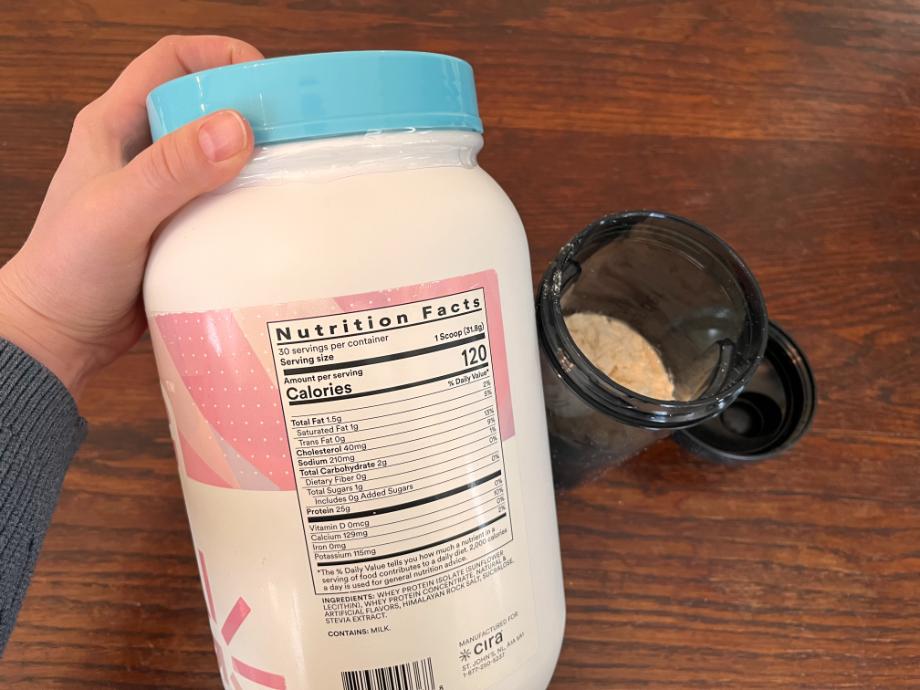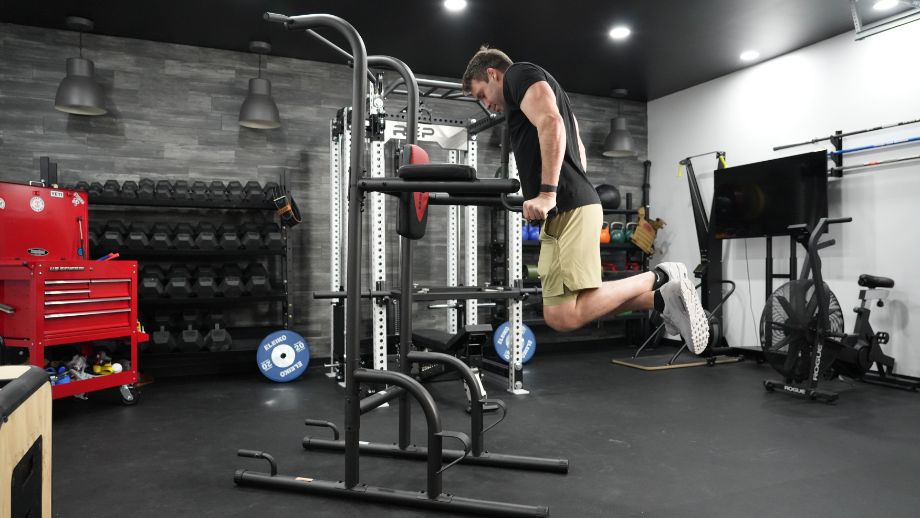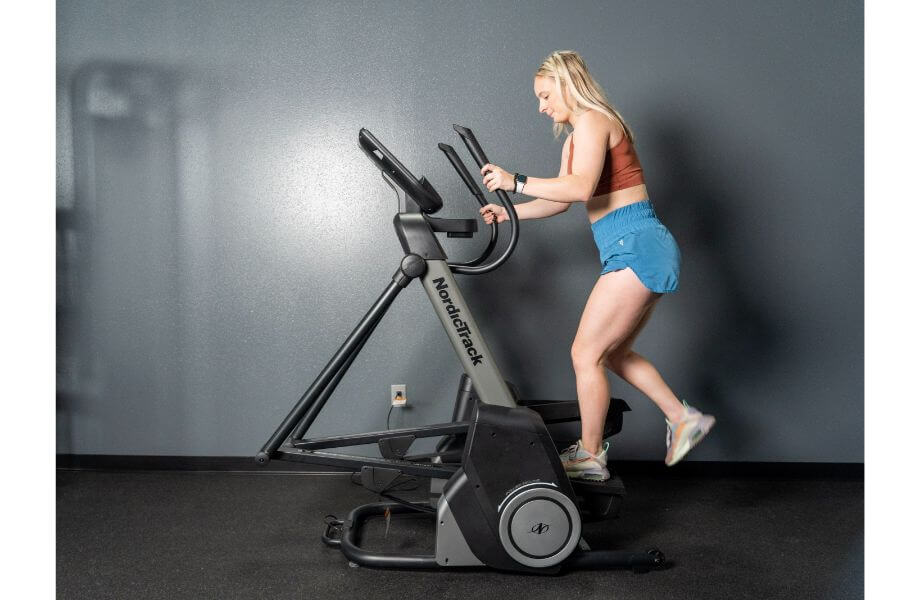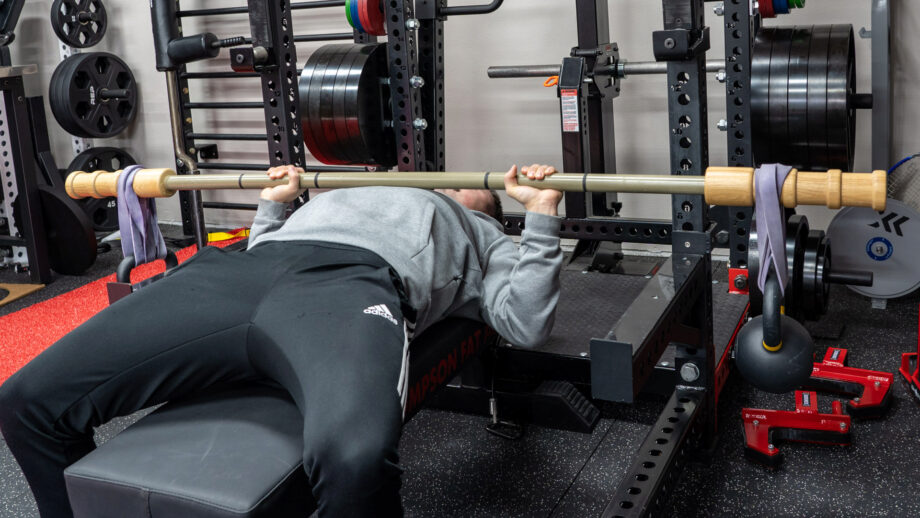Interpreting any supplement label can be intimidating; even the best protein powder labels are challenging because there are many different kinds and items to consider.
Even as a functional nutritionist, I won’t tell you exactly what you should look for because everyone’s goals and dietary needs/preferences are different. My goal is to give you the guidance and tools to help you start deciphering and understanding protein powder labels yourself to make the best choice for your nutritional needs.
Medical disclaimer: This article is intended for educational and informational purposes only. It is not intended as a substitute for medical advice. For health advice, contact a licensed healthcare provider.
What Is Protein Powder?
Protein powder is the concentrated form of protein extracted from animal-based sources, like milk or egg whites, or plant-based foods, like soy, brown rice, peas, and hemp.
Without getting too technical, protein is extracted from the source using either heat or enzymes (or a combination of both), which removes the water and other compounds until a concentrated source of protein remains.
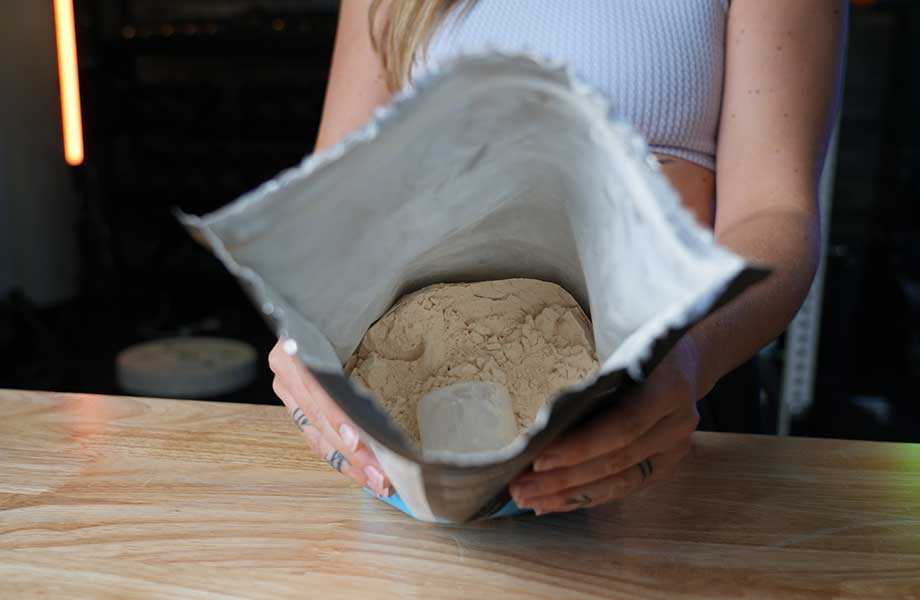
The exact amount of protein depends on the type, but you’ll typically get about 70-95% protein from a powder.
Types of Protein Powder
Before jumping into specifics, it’s helpful to consider the different types of protein powder, a large part of understanding the label. The type of protein you buy not only affects the protein content, it determines how bioavailable the protein is—or how effectively your body can use it.
Here are the most common types of protein powder:
- Whey protein isolate is a pure protein made from liquid whey (a byproduct of cheesemaking) that contains at least 90% protein1. Most fat and carbohydrates (including lactose) get filtered out.
- Whey protein concentrate isn’t as pure as whey protein isolate, but still contains up to 90% protein2. Whey concentrate has more fat and carbohydrates than isolate.
- Whey protein hydrolysate has a similar nutrient profile to whey isolate but with smaller chains of amino acids that may be better absorbed by the body (but the jury is still out3).
- Casein is another byproduct of cheesemaking and the other primary protein in milk. Casein protein digests more slowly than whey, making it less efficient for stimulating muscle protein synthesis after a workout, instead helping with overnight muscle growth and recovery4.
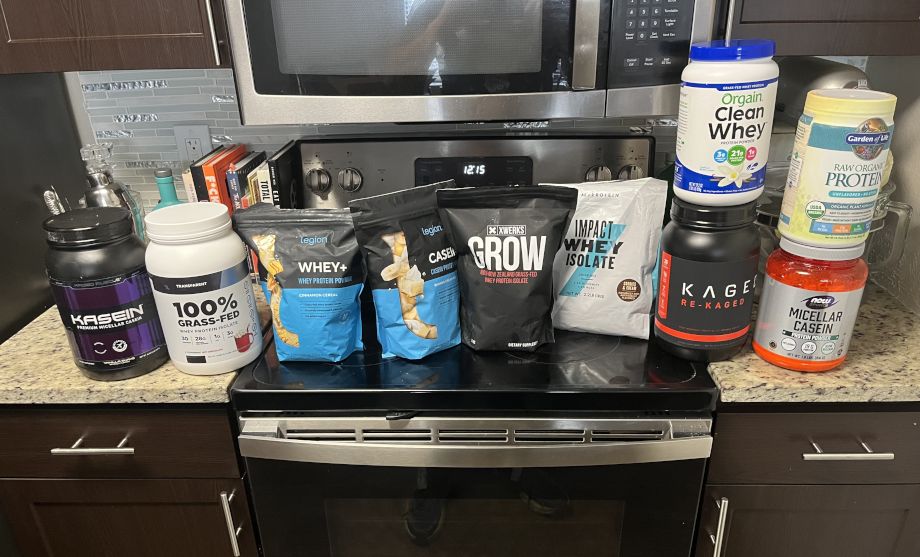
- Soy protein—made from soybeans—is one of the only plant-based proteins containing all nine essential amino acids (albeit some are in smaller amounts than animal-based proteins). Some studies show that soy protein can help with strength and muscle mass5 as much as whey protein.
- Pea protein is made from yellow split peas and is considered a hypoallergenic, vegan protein source. While pea protein is technically a complete protein, it’s low in methionine6, so it’s not comparable to whey protein powder in that way.
- Hemp protein is made from hemp seeds and provides anti-inflammatory omega-3 fatty acids, but it’s not a complete protein. Because of this, it’s missing some of the building blocks that help build muscle.
- Brown rice is another allergy-friendly protein that contains up to 80% protein, but it’s not a complete protein and is best when part of a protein blend.
RELATED: Best Vegan Protein Powder
How To Read Protein Powder Labels
Once you’ve narrowed down the type of protein powder, the next step is to look at total protein content, amino acid profile, calories, and added sugar. You’ll also want to consider the number of servings and whether the protein supplement has been third-party tested.
Protein Content
First up is total protein content since that’s why you’re buying the supplement in the first place.
Generally, I look for a protein powder to provide 20 to 25 grams of protein per serving—and, if the serving is one scoop, even better—as this is the ideal amount for maximizing muscle protein synthesis7 According to research in the Journal of the International Society of Sports Nutrition.
Amino Acid Profile
In addition to looking at the total protein content, you also want to consider the amino acid profile.
There are two types of proteins: complete and incomplete proteins. Complete proteins contain all the essential amino acids (the amino acids your body can’t make on its own). Incomplete proteins are missing or low in essential amino acids.
Animal-based proteins, like whey and casein, are complete, while plant-based protein powders, like hemp, brown rice, and pumpkin seed protein, are incomplete.
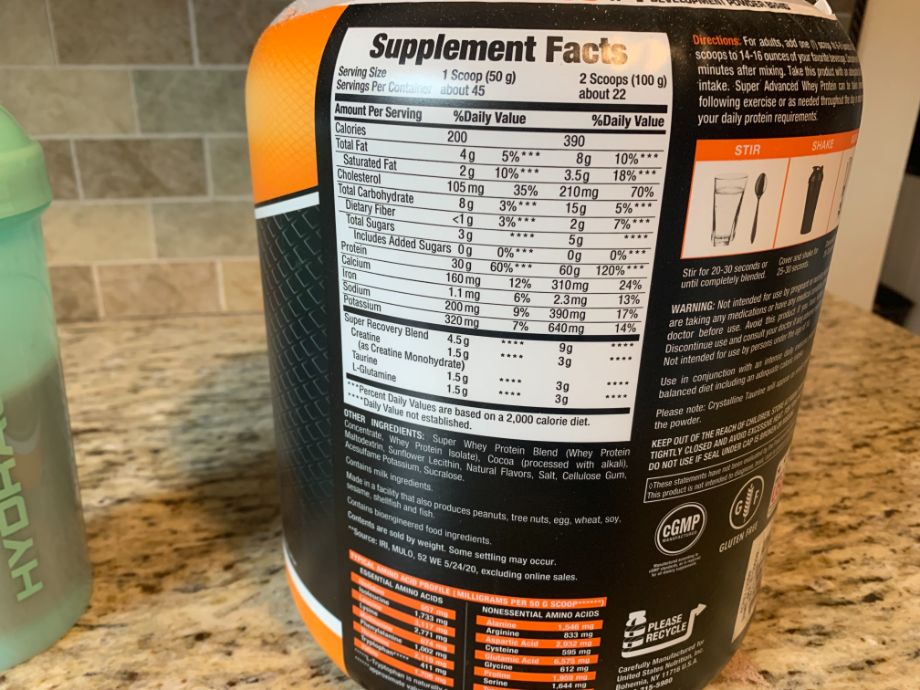
Ideally, you want a complete protein powder to ensure all the essential amino acids are available in adequate amounts. If you prefer a plant-based protein, make sure the one you choose combines different protein sources, like pea, rice, and hemp. The combination provides all the essential amino acids, even if they’re coming from varying protein sources.
You might also want to look for the amount of branched-chain amino acids (BCAAs), which may help reduce muscle soreness8 post-exercise. Plant-based protein powders should have around 3 to 4 grams of BCAAs, while animal-based powders should have 5 to 6 grams.
Calories
The number of calories per serving depends on the type of protein and the added ingredients. Proteins with added sugar, for example, will be higher in total calories.
If you want a lean protein source, look for one that contains about 100 to 120 calories per serving. If you’re looking to bulk up or add body weight, you may want to go higher than that, but if that’s your goal, you could also consider a mass gainer instead.
Added Sugar
In my opinion, it’s best to avoid protein powders with added sugar. Sugar not only adds calories that you might not want, but it’s also pro-inflammatory and may work against your goals.
Granted, most studies that connect sugar with inflammation9 use more than you’d get from a single serving of protein powder. However, since added sugar is so prevalent in other foods, I recommend avoiding it where possible.
Look for the “added sugar” line on the nutrition facts label and try to choose a protein powder with zero grams.
And while artificial sweeteners don’t add calories to your protein powder, you might want to avoid them, too. Science hasn’t settled on a definitive answer, but these sweeteners may contribute to health issues10. The following ingredients indicate there are artificial sweeteners in the protein powder:
- Acesulfame potassium
- Advantame
- Aspartame
- Neotame
- Saccharin
- Sucralose
You can opt for an unsweetened powder, but monk fruit and stevia are natural, low-calorie sweeteners that give you the best of both worlds.
Servings
Servings determine how much bang you’ll get for your buck.
When looking at the nutrition label, you’ll see the serving size and the number of servings per container at the top. The serving size is usually listed in the number of scoops and grams of protein. Grams are a more accurate measurement since it’s exact, whereas some may be more light or heavy-handed on the scoop size.
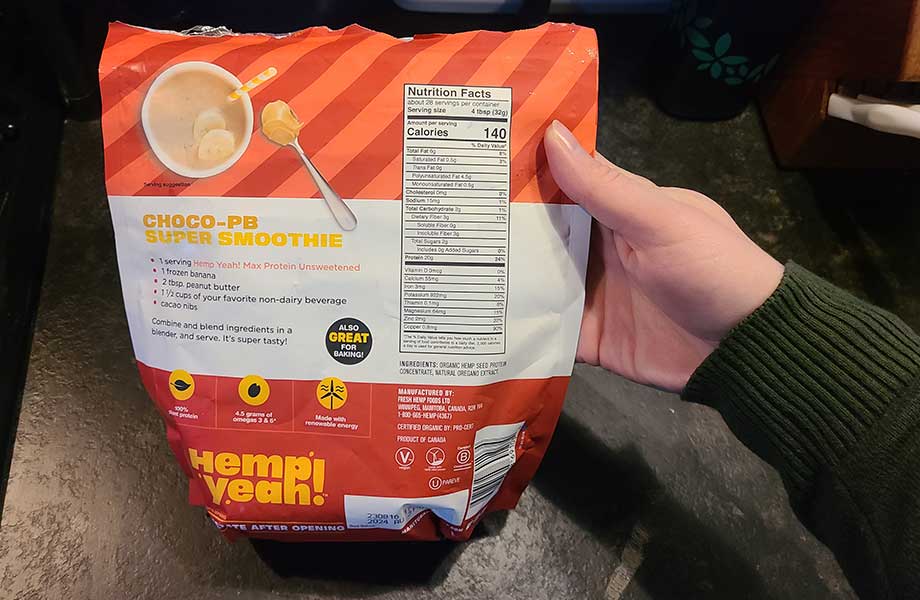
We generally like to see a one-scoop serving size, around 30 grams, since this indicates the protein will go a long way (assuming it has a high protein content, too). Smaller quantities also tend to mix into protein shakes or smoothies better.
Under serving size, you’ll also see servings per container, which is very straightforward: The number listed is the number of servings you’ll get, assuming you’re sticking to the listed serving size. Knowing this can help you calculate the cost per serving to see if the protein powder falls within your budget.
Third-Party Testing
Third-party testing ensures you’re actually getting what the label says in the amounts listed because protein supplements aren’t FDA-regulated. Look for certifications or seals that indicate third-party testing. Some of the most well-known third-party agencies are U.S. Pharmacopeia (USP), NSF International, and ConsumerLab.
If a label doesn’t have one of these seals, it doesn’t automatically mean it’s not third-party tested, but you might have to do more digging into the brand to double-check.
How To Choose a Protein Powder
Again, the best type of protein powder for you is a personal decision based on your goals. That said, if you’re looking for a high-quality protein low in carbs and fats—i.e., one that will increase your protein intake without spiking your other macronutrients—then I recommend whey protein isolate.
It’s more bioavailable than other forms and is also a good choice for those with lactose intolerance (since most lactose gets removed). Whey protein isolate can fit nicely with most fitness goals—from weight loss to bodybuilding.
RELATED: Best Protein Powder For Muscle Gain
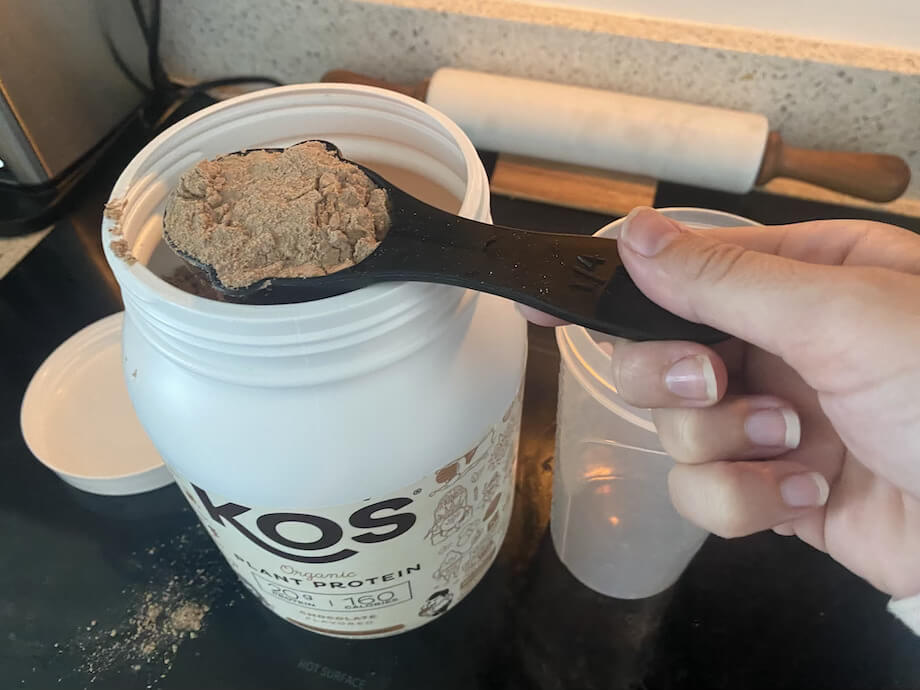
If you prefer plant-based protein powder, look for one that combines several protein sources to ensure you’re getting all the essential amino acids you need.
Once you’ve narrowed down the type, you’ll want to look at the protein content, calories, and added sugar content to determine whether it fits into your macros (or your preferred dietary pattern if you don’t track macros).
From there, consider the cost per serving and whether it fits within your budget. While you should consider the overall cost, the cost per serving gives you a better idea of the value since container sizes can vary widely.
For more in-depth information, check out our guide on what to look for in a protein powder from a registered dietitian.
Understanding Protein Powder Labels: Final Thoughts
Along with the best creatine, almost everyone can benefit from incorporating a high-quality protein powder into their fitness routine. While there’s no “one protein powder to rule them all,” understanding protein powder labels can help you determine the best fit for you.
When reading a protein powder label:
- Consider the type; I recommend whey protein isolate for those who are OK with animal-based protein powders.
- Look for around 20 to 25 grams of protein and 100 to 120 calories per serving.
- Try to avoid added sugars and artificial sweeteners.
- Make sure the protein powder you pick is third-party tested.
Understanding Protein Powder Labels: FAQs
Are protein powder labels accurate?
It depends. If you choose a protein powder that’s been third-party tested by a reputable agency like the NSF or USP, the entire label, from the macros to the ingredients list, will be accurate. However, supplements aren’t FDA-regulated, so if you opt for a protein powder that hasn’t been third-party tested, you might not get what the label claims.
TL;DR: Choose a protein powder that’s third-party tested.
How is protein measured in protein powder?
There are several ways the protein in protein powder is measured. There’s the Kjeldahl method, which is the most common. It involves chemically breaking down the protein bonds and measuring the nitrogen. An amino acid analysis—measuring the quantity and type of amino acids—is another approach.
Some may also use Fourier transform infrared spectroscopy (FTIR) or near-infrared reflectance (NIR). Because you can’t measure protein directly, each method may give slightly different results.
How do I know which protein powder is right for me?
Knowing the right protein powder for you is a personal decision. Look for a protein type that fits your diet plan and provides around 20 to 25 grams of protein per serving. The rest comes down to your goals and the macros you’re trying to hit.
These statements have not been evaluated by the Food and Drug Administration. This product is not intended to diagnose, treat, cure, or prevent any diseases.
References
1. White, SS, Fox, KM, Jervis, SM, Drake, MA. Influence of heating and acidification on the flavor of whey protein isolate. J Dairy Sci. 2013;96(3):1366-1379. doi:10.3168/jds.2012-5935
2. United States Department of Agriculture. USDA specifications for dry whey protein concentrate. Accessed April 16, 2024.
3. Moro, T, Brightwell, CR, Velarde, B, et al. Whey Protein Hydrolysate Increases Amino Acid Uptake, mTORC1 Signaling, and Protein Synthesis in Skeletal Muscle of Healthy Young Men in a Randomized Crossover Trial. J Nutr. 2019;149(7):1149-1158. doi:10.1093/jn/nxz053
4. Kim, J. Pre-sleep casein protein ingestion: new paradigm in post-exercise recovery nutrition. Phys Act Nutr. 2020;24(2):6-10. doi:10.20463/pan.2020.0009
5. Lynch, HM, Buman, MP, Dickinson, JM, Ransdell, LB, Johnston, CS, Wharton, CM. No significant differences in muscle growth and strength development when consuming soy and whey protein supplements matched for leucine following a 12 week resistance training program in men and women: A randomized trial. Int J Environ Res Public Health. 2020;17(11):3871. doi:10.3390/ijerph17113871
6. Shen, Y, Hong, S, Li, Y. Pea protein composition, functionality, modification, and food applications: A review. Adv Food Nutr Res. 2022;101:71-127. doi:10.1016/bs.afnr.2022.02.002
7. Schoenfeld, BJ, Aragon, AA. How much protein can the body use in a single meal for muscle-building? Implications for daily protein distribution. J Int Soc Sports Nutr. 2018;15:10. doi:10.1186/s12970-018-0215-1
8. Doma, K, Singh, U, Boullosa, D, Connor, JD. The effect of branched-chain amino acid on muscle damage markers and performance following strenuous exercise: a systematic review and meta-analysis. Appl Physiol Nutr Metab. 2021;46(11):1303-1313. doi:10.1139/apnm-2021-0110
9. Ma, X, Nan, F, Liang, H, et al. Excessive intake of sugar: An accomplice of inflammation. Front Immunol. 2022;13:988481. doi:10.3389/fimmu.2022.988481
10. Ghusn, W, Naik, R, Yibirin, M. The impact of artificial sweeteners on human health and cancer association: A comprehensive clinical review. Cureus. 2023;15(12):e51299. doi:10.7759/cureus.51299


